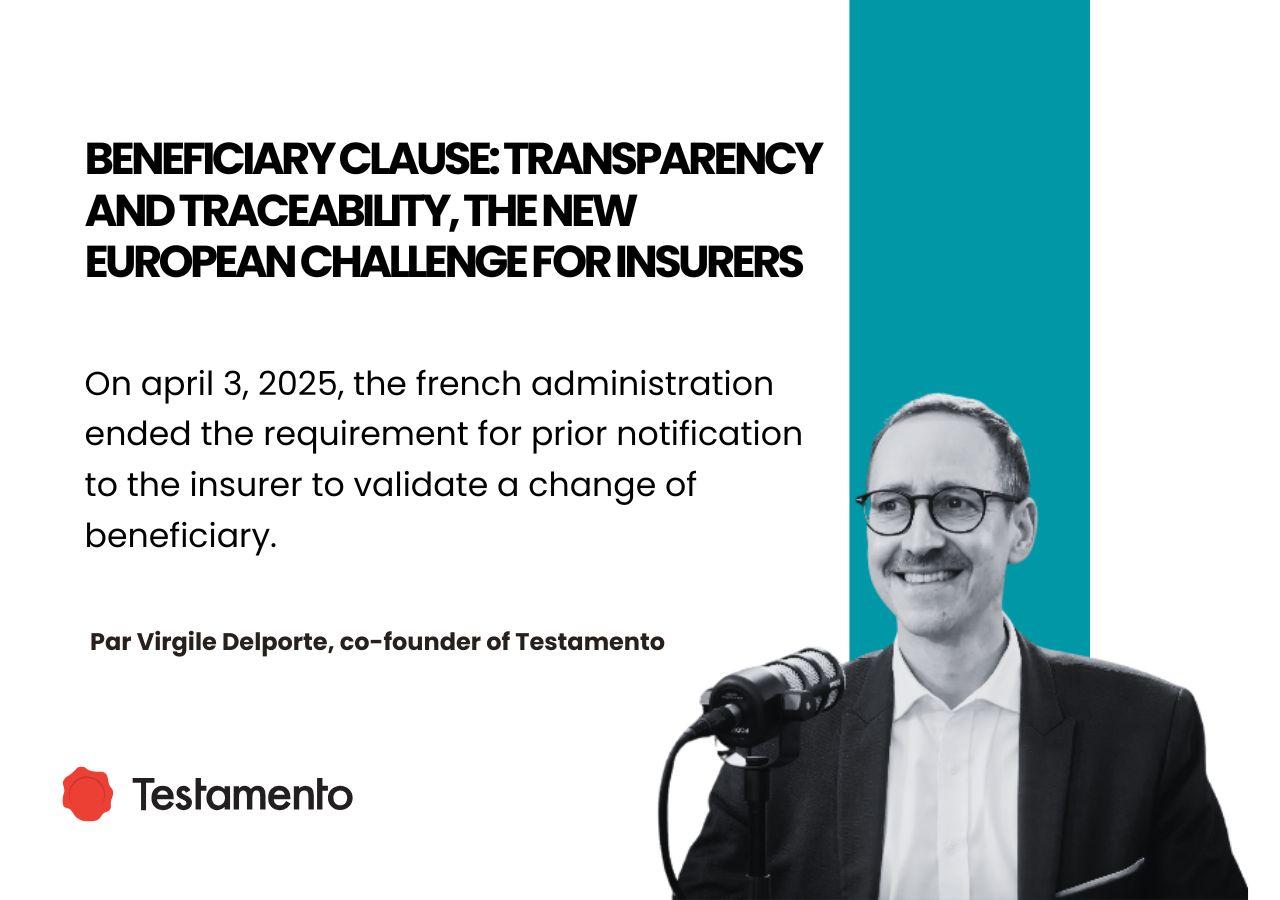French law aligns with a European trend: more freedom for policyholders, new operational risks for insurers
French law is catching up with a broader European movement: giving policyholders greater freedom. For insurers, this shift brings new priorities—vigilance and traceability are becoming essential.
The latest decision from the French Court of Cassation (2nd Civil Chamber, April 3, 2025, No. 23-13.803) adds complexity to insurers’ daily operations. The ruling transfers the risk from a legal concern to an operational and reputational one.
On April 3, 2025, the Court removed the requirement for insurers to be informed in advance of a beneficiary change. From now on, what matters is the “clear and unambiguous intent of the policyholder,” as assessed by lower courts.
A contrasted European evolution
France, with its recent reversal, is now aligning with a broader trend observed in several European countries. In Germany and Austria, changing the beneficiary of a life insurance policy can be done at any time, based solely on the policyholder’s intention. Notification to the insurer is mainly required to make the change enforceable, but not for its legal validity.
In Italy, the designation or revocation of a beneficiary is also treated as a unilateral act by the policyholder. While notification to the insurer is not required for legal validity, it remains recommended to ensure the effectiveness of the change.
By contrast, Belgium follows a more formalistic approach: here, notifying the insurer is mandatory for the change to be enforceable, and legislation strictly regulates how a beneficiary can be changed.
France thus joins the group of countries where the policyholder’s intention takes precedence over formalities, while maintaining a strong need for traceability to prevent disputes and protect the interests of all parties involved.
The paradox of legal simplification
Until now, the obligation to inform the insurer provided a layer of security: the last known beneficiary could be paid without ambiguity. Now, changes can be made through various means: signed forms, handwritten letters, wills deposited with a notary… But what happens if these documents aren’t shared?
Real-life examples:
An insured person changes the beneficiary clause by letter, but stores it away without sending it: upon death, the insurer pays the former beneficiary, sparking family disputes.
A will designates a new beneficiary, but the copy is only shared after death: the deceased’s wishes are discovered too late, and the insurer has already made the payment.
A change form is completed and sent to an advisor, but gets lost in the administrative chain.
In all of these scenarios, the insurer may not be at fault, but the actual beneficiary is forced into a long and painful legal battle.
Impact on the consumer
For the policyholder and their loved ones, this development is a double-edged sword: more freedom, but also more responsibility. If the policyholder’s intent is not clearly documented and accessible, the risk of disputes and conflicts increases. A simple oversight or act of negligence can result in the deceased’s wishes not being honored. For families, this often leads to confusion—and sometimes a sense of injustice.
An underestimated reputational risk for insurers
Life insurance is, above all, a matter of trust.
When the capital is paid out to a former beneficiary despite the insured’s clear intent to the contrary, the reaction from loved ones can be intense: “How could the insurer make such a mistake?” Even if the legal answer is straightforward, the reputational impact can be significant, especially in a sector where emotion and trust play such a crucial role.
Traceability: the new strategic priority
To avoid these problematics, the only way forward is systematic and secure traceability of the policyholder’s intent:
Facilitate the designation and modification of beneficiaries through simple and accessible digital processes;
Ensure reliable, dated, and verifiable storage of documents;
Equip advisors to better support the formalization of intentions;
Integrate periodic reminders and verification options in case of a claim.
Digitization and electronic document management (EDM) become tools of trust, not only for the insurer but also for the consumer and their heirs.
Conclusion and call to action
The Court of Cassation ruling of April 3, 2025, marks a turning point: it grants policyholders new freedoms but requires insurers and the entire industry to rethink their practices. It is no longer just about securing capital but about ensuring that the policyholder’s intent is respected clearly and unequivocally.
Call to action:
Insurance and wealth management professionals, let’s turn this challenge into an opportunity: make traceability and transparency of beneficiary clauses the new standard, serving trust, family peace of mind, and relational excellence.
Références et sources
- Source officielle : Cour de cassation, 2e chambre civile, 3 avril 2025, n°23-13.803
- Allemagne : LexisNexis Autriche, Wikipedia Allemagne
- Italie : Federnotizie, Brocardi – Art. 1920 c.c.
- Belgique : CMS Law




